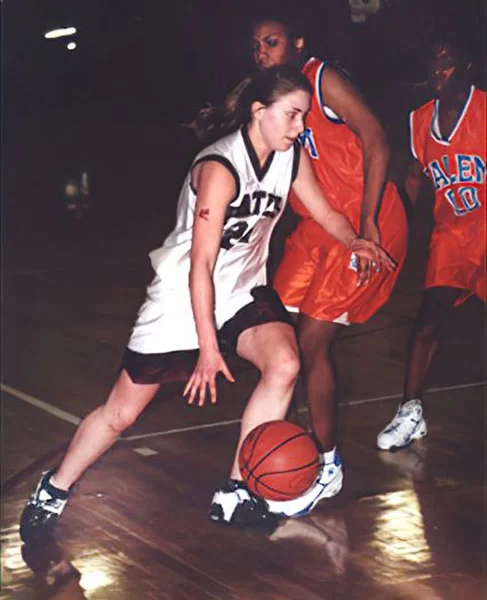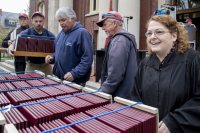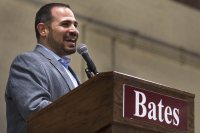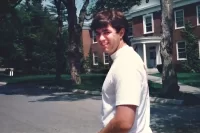
Bates is hosting two rounds of the NCAA Division III Women’s Basketball Championship, today (Friday) and tomorrow (Saturday), in Alumni Gym. With that in mind, let’s look back a quarter century to when hosting even one NCAA game, let alone two, wasn’t possible.
It was the mid-1990s, and the Bates women’s basketball program was rocketing into national prominence under head coach Jim Murphy ’69. Around the same time, the college presidents of the New England Small College Athletic Conference (NESCAC) had made a big change, allowing their athletic teams to participate in NCAA tournaments for the first time.
Tourney Time!
- Viewing information and more: Bates (22-5) faces Brooklyn College at 6:30 p.m., Friday, March 1.
- Springfield and Widener will tip off at 4 p.m., March 1.
- The winners of the two first-round games play at 6:30 p.m., Saturday, March 2.
That opened the door for Murphy’s rapidly improving team to join the Big Dance. And in March 1997, their opportunity for NCAA post-season play came calling when they went 20-5 during the regular season. The team earned a No. 4 seed in the eight-team Northeast Region, which meant they’d get to host a first-round game in venerable, cozy (capacity 839), and intimidating Alumni Gym.
But it was not to be. “Hit the road, Bobcats,” the NCAA told Bates, pointing to its rule that courts must be 94 feet in length. Rather than hosting, Bates was assigned an away game vs. a lower seed, Western Connecticut State, which the Bobcats lost, 86-65.
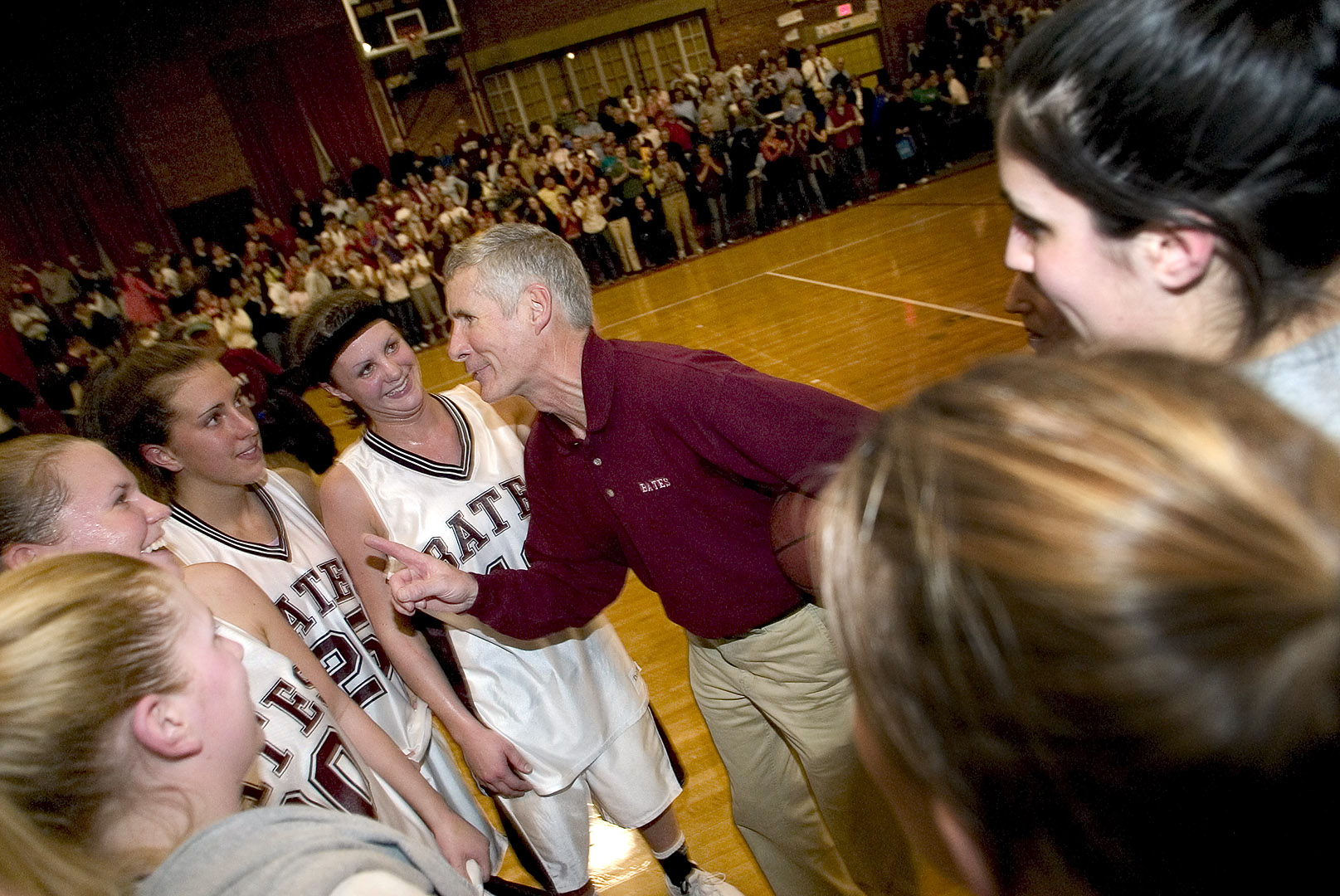
“Their regulations say that the courts must be 94 feet long,” Murphy sighed to Lewiston Sun Journal columnist Kalle Oakes. “And ours is not.” It was 6 feet shorter.
There’s a famous scene in the movie Hoosiers, about a Cinderella boys’ high school basketball team in 1952 Indiana. Arriving at the huge Indianapolis field house for the playoffs, the team seems cowed by the space.
So their coach, played by Gene Hackman, measures the height of the rim and the distance from the free-throw line to the basket. “I think you’ll find this is the exact same measurements as our gym in Hickory,” says Hackman, as a way to tell his boys that they just need to stick to their game.
But what the coach didn’t measure was the length of the court, which very well may have been different from Hickory to Indianapolis’ Butler Fieldhouse. In the early days of basketball, with games being played in all kinds of spaces, from cramped YMCA gyms to university field houses, the rules simply stated a court’s maximum dimension.
(Richard Johnson ’78 , curator of the Sports Museum in the TD Garden, compares the short-court era to the old Boston Garden, built the same year as Alumni Gym, when no standards existed for rink size, eventually ending up 9 feet feet short of NHL standards.)
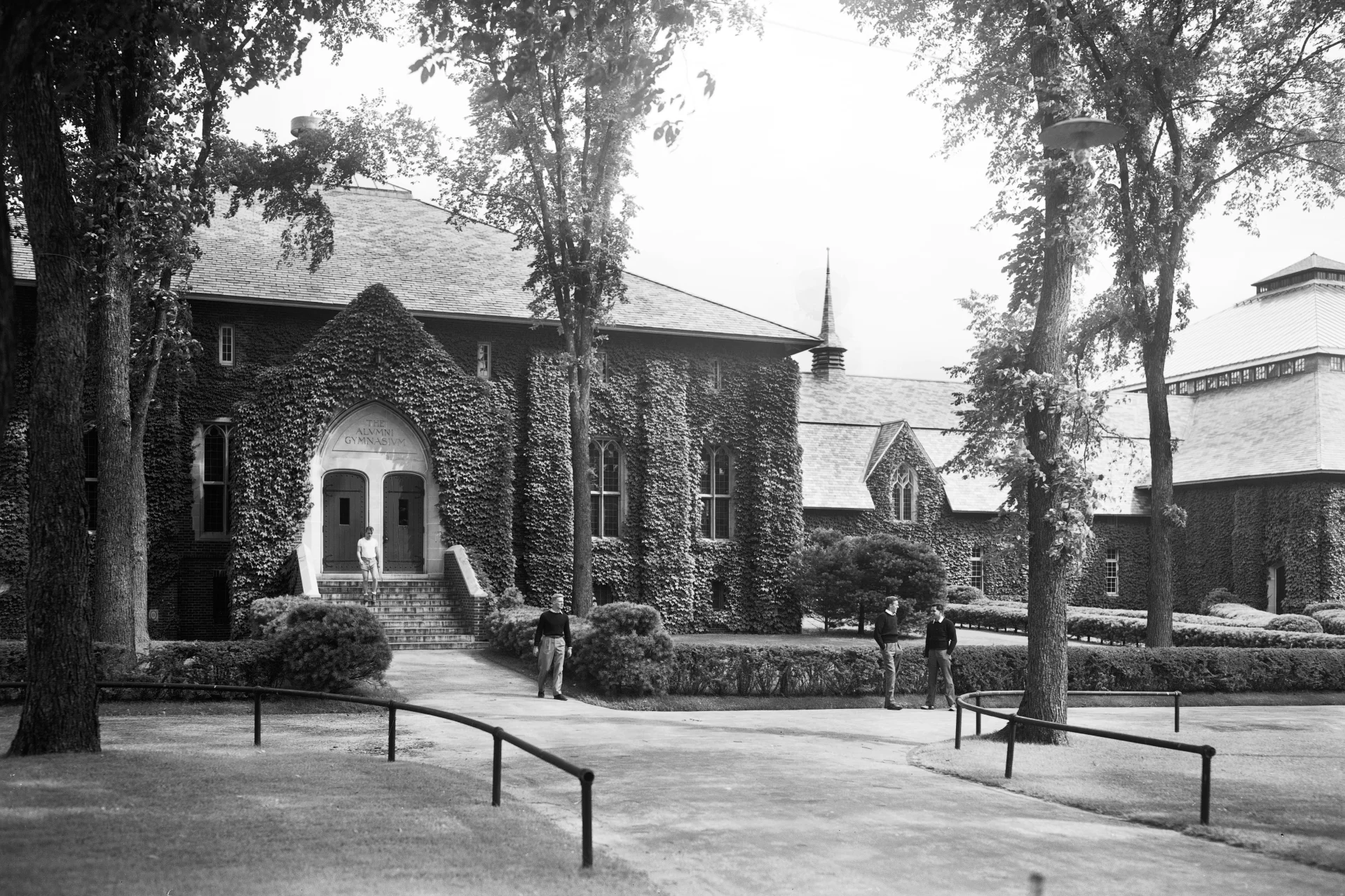
In 1928, when Alumni Gym was built, basketball courts could be up to 90 feet in length, and Bates’ came in at 88 feet. (Other college gyms were likely around that size, too, but few are still being used for varsity basketball.)
Over the years, 94 feet became the standard court length, especially for NCAA and the NBA competition, if not for high schools and other venues. Murphy, a standout high school athlete at Portland (Maine) High School and at Bates, recalls playing in a tiny Portland YMCA gym.
Those missing 6 feet never mattered to Bates, which due to its charter membership in NESCAC, starting in 1971, couldn’t send any athletic teams to NCAA tournaments for two decades. In the pre-NESCAC era, the men’s team earned a bid to the regional tournament in 1961, but as a lower seed wasn’t in a position to host. They traveled to Springfield, Mass., defeating Springfield College in the first round.
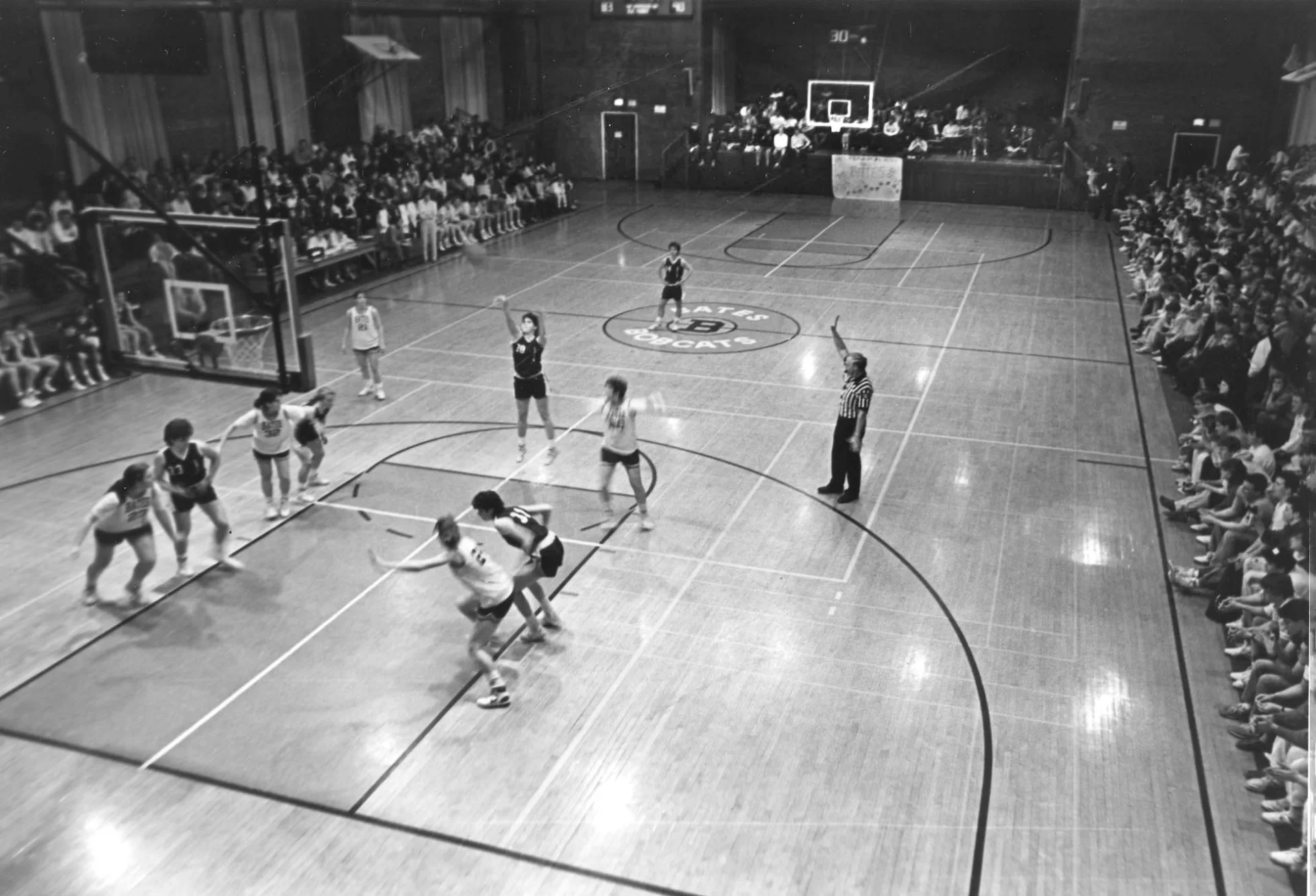
Following the 1997 basketball season, when Bates played an away game despite being a higher seed at a time when Murphy’s program was on a roll, Bates went to work to find 6 feet to add to the Alumni Gym court so it could host in 1998. “I learned a lot about court dimensions,” he said.
As Murphy recalls, the college was able to find 3 feet on either end of the space. “First, the stairs to the gym stage had to be set back into the stage,” he recalls. Today, the stairs are recessed into the stage and, since 2018, the stage has permanent grandstands.
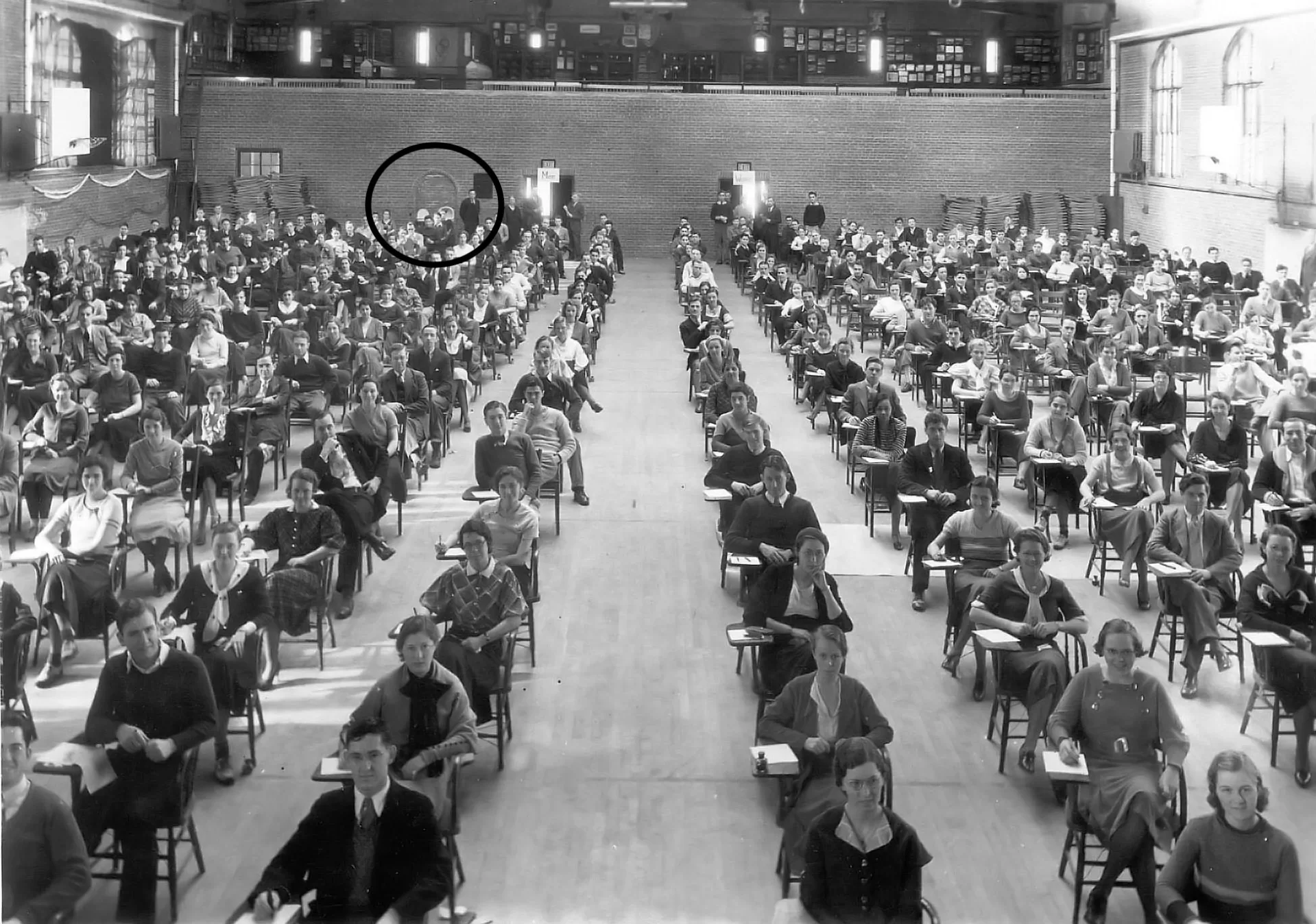
On the other end, attention focused on a historic water fountain set out from the brick wall. “That had to be removed,” said Murphy. “Then, the lines on the court were repainted for both basketball and volleyball.”
When the Bates women’s team went 22-4 the next year, they earned a first-round bye — then the historic opportunity to host the college’s first-ever NCAA basketball tournament game, on March 7, 1998.
Hosting Salem State College (now University), Bates sophomore Jolene Thurston sank two free throws with 1.8 seconds left to secure a 71–67 win. “They did the wave!” said Thurston after the game, referring to the crowd of 622 that jammed into the old gym. “The crowd was crazy, screaming. It was great!”
